Ilkinding’a lies at 10 km north of Arusha town, a 30 minutes drive. From Arusha town, take the small road North at the Ilboru junction on the Moshi-Nairobi road. Follow the Ilboru Safari Lodge sign. With its neighbor Ilboru, it has played a role in the history of Arusha. The Lutheran Missionaries form Germany and Sabaya, the chief of the Wa-arusha people, agreed in 1904 to build the first church and school in Ilboru. From that time on, co-operation between the church and the chiefs was settled. Youngsters were invited to study at the boarding school. In 1907 the first young men were baptized. Esizo Bene kokan became Simeon, Lengivai Kivuyu became Johannes…… In those days girls were assigned a man to marry, and if they refused they were beaten. The ran away from home and the missionaries received them in their schools. In 1910 the first girl was baptized. Communication between chiefs and the British ruler took place by letters, but in those days very few people attended schools to become literate, so the baptized youngsters became secretaries to the chiefs. Later on, Simeon Kokan was chosen by the Wa-arusha to become chief, and under his leadership churches, schools, roads and the Court House were built. The main road leading to the Arusha International Conference Center is named in his memory. The last chief named Stefania had to retire when the new independent government abolished chiefdom with the Uhuru (freedom) Declaration.
Download PDF Read MoreArusha/Ologeruno/Ilkioga/Ormelil/Milkhasi Forest/Timbolo
Timbolo/Olkolola/Ilkurot
Ilkurot/Muklat/Ngaramtoni/Arusha
TRAVELERS CODE: The natural environment is precious; the villagers are asking visitors not to leave litter on their journey. Always take rubbish back to your starting point or to places the guides assign you. While swimming don’t use soap, the water comes pure from the mountain and people living downhill use this water daily. Please respect the customs of the people so that tourism will not disturb their culture. Descent clothing and behavior is required. Ask your guides permission before taking photos, so that nobody will be offended.
DEVELOPMENT PROJECT: The profit from this tour is used to improve the primary school. Your visit helps us to give the children a better education which is the base for leading a good life.
NG’IRESI: Ng’iresi is situated 7 km out of Arusha on the green and steep slopes of Mt. Meru. The inhabitants are all farmers of the Wa-arusha tribe. The Wa-arusha are family of the Maasai, but have gradually shifted from pastoralism to agriculture. Some of them are still living in the traditional bomas, others try hard to build up stone houses; some still depend on their cows, while others have cultivated large plots. The village perfectly shows the transition form traditional into modern African life. On the steep slopes agriculture is not an easy task. If farmers would not take preventive measures, soil erosion would take place rapidly. Many farmers now have started placing contour lines and building terraces. The irrigation system in the village is helping the farmers to increase their harvest further. Some villagers even are taking on other innovative projects like a fish nursery, a bio gas system and a cross breeding project.
In January this year, Ng’iresi fulfilled it’s own dream when construction of a house for teachers was completed. In Olgilai, and adopted village of the Ng’iresi Cultural Tourism Program, a classroom for the primary school was built. The children of the Ng’iresi area will now enjoy an improved educational environment thanks to cultural tourism.
Half Day Tour: In this tour you will be welcomed with coffee and tea at Mzee Loti’s farm and get an explanation about the biogas, crossbreeding and soil conservation projects on the farm. Next, you would be made to take a walk to some of the nearby bomas, where you can see the various types and styles of traditional Maasai and Wa-arusha houses. Then you would start climbing Lekimana Hill, from where you can have a beautiful view over Arusha town and the surrounding Maasai plains. On a clear day Kilimanjaro is visible. You descend Lekimana Hill on the other side so that you can visit Ngiresi primary school. Back at Mzee Lotis farm, you get a traditional meal cooked by women in the village.
Day Tour: This tour adds a visit to the catchment forest on the higher slopes of Meru. Here you can see the spring that is the main water source for the village. A few meters downstream the farmers are building an intake for the irrigation system. Groups with a special interest can plan a visit to a traditional healer at the edge of the forest. Further downhill a fish nursery is visited in the backyard of a farmer. The day is finished with a dinner at Mzee Lotis farm.
Day And A Half Tour: During this tour, you spend the night camping at Mzee Loti’s farm. From here you start climbing Kivesi Hill the next morning, this is an old volcano with a natural forest on top. Baboons and gazelles can be seen in the forest. You descend the hill on the other side and return to Arusha.
Traditional Medicine Tour: All tours can include a visit to a traditional healer living in the area, but tourists who are keen on learning more about traditional medicine can spend a half or full day walking through the slopes of Meru collecting herbs and plants that have been used by local people for thousands of years. A sheet listing the various plants will be given with their Latin and common name in the local dialect. Your guide will help you collect samples of the numerous medicinal species.
MEALS: Meals are prepared by the Juhudi women’s group ( a local family may prepare meals for smaller groups). The women can make various traditional African meals, but can serve western food as well.
FACILITIES: At Mzee Lotis farm there is a simple but clean toilet, from the pit-latrine model. From the first revenue, a small bathroom will be built that can be used by guest who spend the night at the farm. Visitors can put up their tents on one of the shambaas around Mzee Lotis house, a watchman will guarantee the safety. During rain, visitors can shelter in Mzee Lotis house.
GUIDES: Our guides are all villagers who have lived many years in the village. They speak good English and can tell interesting stories about history, culture and daily life in the village. They are also well informed about the different development projects in the area, and can tell you the ins and outs about the Wa-arusha culture.
DEVELOPMENT FUND: Ngiresi Primary School was built in 1975. The building consists of seven classrooms, and 510 children attend the school. The classrooms are rather crowded and there are not enough learning materials for everyone. Through tourism revenues, desks and new classroom have already been added, but far form enough has been done. From the money earned by a tourist visit, 4 US$ will go to a school development fund, used for improvements of the school. 1 US$ can buy two schoolbooks, 5 US$ is enough for wood from which the children can make a desk and for 10 US$ the school can buy a topographic map of the country.
USAMBARA MOUNTAINS: The Usambara mountains are situated in the North Eastern part of Tanzania between Mount Kilimanjaro and the Indian Ocean. The mountains rises up steeply from the surrounding plains and can only be entered through a few roads. There is only one tarmac road in the area that winds along a small river to Soni and Lushoto: the largest towns in the area. Because of its pleasant climate, the mountains were favoured by the Germans and the English during colonial times as it is evidenced by the numerous historic buildings existing here of the past. From a distance the mountains look like a colourful mosaic. Around the fertile slopes of Soni and Lushoto farmers cultivate small plots but further away from the towns large areas are still covered by dense tropical forests. The viewpoints on the southern and western side of the Usambara provide the spectacular views of the plains of Mkomazi and Handeni. Kilimanjaro can be seen on the horizon and at the end of the day the sunset turns the area into a tremendous pallet of unforgettable colors.
Irente Viewpoint: It is a famous viewpoint from where you can see the village of Mazinde laying almost 1000 meters below the vast Maasai plains. On your way back to Lushoto you can visit the Irente Farm cheese factory and the royal village of Kwembago. You will enjoy the whole meal picnic at Irente Farm
Usambara Farm And Flora Tour: This walk takes you trough the fertile farmlands of Jaegertal to a fruit tree nursery where you can learn about different varieties of fruit trees and their propagation. You can continue uphill to the village of Vuli to learn about local soil conservation, irrigation projects and farming methods. You can return to Lushoto via the Arboretum.
Growing Rock: From Soni you will walk to the top of the Kwamongo Mountains Peak, famous for its multicoloured butterflies, via the villages of Shashui and Kwemula. From Kwamongo you can have the views of Soni, Lushoto and the Handeni Plains. You descend to the village of Magila at the foot of the “Growing Rock” to visit a soil conservation project and learn why the rock is growing.
Magamba Rainforest: This tour will begin with an uphill trek from Lushoto to the royal village of Kwembago, where you can learn about the culture and history of the traditional ruling clan, the Kilindi. From Kwembago you will have a beautiful view over Lushoto and the Maasai plains. Then you would start proceeding to the lush Magamba rainforest, home of black and white colored monkeys. The return to Lushoto passes through the old German Middle School and the village of Magamba.
Mazumbai Forest: This challenging walk begins in Soni and passes via Kwamengo and Magina. From there, the walk continues to the Bumbuli Mission – a historic German settlement – and continues to the Mzumbai rain forest reserve, a birdwatchers paradise. After enjoying the forest you return to Soni via the villages of Mgwashi and Kwesine.
Bangala River: From the village of Mbuzii you weave slowly down the steep slopes of the Bangal River Valley, at times wading trough cool mountain streams that offer a welcome relief to the rising savanna heat. Trough the walk you see traditional irrigation systems and have a beautiful view over the Maasai plains. Before returning to Lushoto you visit a local farm and nursery.
Western Usambara: From Lushoto you pass trough tropical rainforests, the ocher mountains and trough valleys to the villages of Lukozi, Manolo and Sunga before finally reaching your destination at the historical village of Mtae. On the route you can reach several superb viewpoints and visit various development projects.
GUIDES: Our guides are all former students of the Shambalai Secondary School in Lushoto. Some of them have to wait one year for further education, others won’t continue studying and are trying to find suitable work like tour guiding. All speak reasonably good English, are familiar with the area and can tell you many stories about history and the daily life of the Shambaa people.
DEVELOPMENT PROJECTS: The projects focus on improving the farming and irrigation system, which is seen as one of the main factors for raising the standard of living. Improvements of the traditional irrigation systems are combined with afforestation, soil erosion control, introduction of cross breeding and strengthening of the social organization. Irrigation dams, many terraces and contour lines are the most visible results of the projects. But when speaking with farmers you may notice that their increased awareness of social and environmental problems and their determination to change may even be a more valuable result.
MULALA: The slopes of Mount Meru offer a bit of magic for the tourist that is looking for a memorable excursion on a majestic African peak. A typical rural setting, the village of Mulala lies 1450 m above sea level on the southern slopes of Mount Meru and only 30 kilometers from Arusha. Visitors wind their way up the mountain through a maze of lush, green vegetation dotted with small farms. The villagers are mostly subsistence farmers and grow coffee, bananas, vegetables, and fruits. They also keep livestock for milk and beef. When you arrive at Mama Anna’s cheese making place, you will be warmly welcomed by the village women who will proudly show you their activities and offer you a glimpse of rural African life. Ranging from cheese making, to bread baking to a small store, the women have created projects which support their families and preserve their culture – all beneath the lush vegetation of Mount Meru. From Mama Anna’s, you’ll wind up and down the slopes of Mt Meru, experience the spectacular beauty of this unique area, and leave feeling you’ve discovered new friends. The women in Mulala have united themselves in the Agape women’s group. Through this group they try to support economic activities of the members and start new income generating projects, like the Mulala Cultural Tourism Program.
It is the only cultural tourism program in Tanzania completely launched, developed, and implemented by women.
Marisha River Tour: This 2 hours guided walk weaves you along the village foot trails, through the coffee and banana farms, and down to the scenic riverbanks of the Marisha River. Thick with tropical vegetation, various birds and primates, you can sit along the banks and be enveloped by the many wonders of the area. You may continue on to the Ziwa la Mzungu (Whitemans lake) where legend has it that a white man disappeared in the lake while fishing after being confused by demonic sounds coming from the water.
Lemeka Hill Tour: Crisscross the coffee and banana farms and head up for Lemeka Hill for a breathtaking view of both Mt. Kilimanjaro and Mt. Meru. The scene is a visual patchwork of Maasai plains, small townships and surrounding hills. On the slopes of Lemeka Hill you can visit the farm of Mr. Moses Karoiya, the traditional healer in the village. He will tell some stories about the history of the Meru tribe, and provide extensive explanation on the traditional methods he uses to cure sick villagers. Once you’ve descended the hill, you can further delve into the Mt. Meru forest, head to the tranquil banks of the Marisha River or return to the point of origin, Mama Annas cheese making place. This trip takes about 2 hours.
Agape Tour: In a 1,5 hours guided walk you can visit the farms of all five members of the Agape women’s group. The women will give explanation about their farming methods and show you the various economic activities they have started, like cheese-making, bread-making, flower seed growing and chili growing.
FACILITIES: In Mulala the women have built a pleasant resting place where meals prepared by the women’s group can be served. A place for overnight camping is available at the women compound. From the first revenue a small bathroom has been built that can be used by the guests who spend the night at the farm.
GUIDES: The guides are mostly women who have lived for many years in Mulala. They speak some English, and can further use interpreters to tell interesting stories. In addition to the training in cheese-and-bread making, the women have undergone a tourism training program.
DEVELOPMENTAL PROJECT: With assistance from a Dutch development project called FAIDA (which means “profit”), many farmers in Mulala and surrounding villages have started new economic activities over the last few years. FAIDA provides farmers with technology support, like introducing biogas systems, and establishes linkages between farmers and purchasers.
The local entrepreneurs can follow training courses at the FAIDA office, e.g. on bookkeeping and marketing, and can be assisted with business plans and loan applications. The members of the Agape women’s group have seen their income growing considerably, thanks to the support from FAIDA. The profit from tourism they will use for investing in new economic activities. Further, the women will donate a part of the profit to the primary school in the village, since they consider good education as the key to further development of their village

Tanzania is great to visit any time of year. Most people avoid the rainy months of April, May, and November. Some travelers like to go during the peak migration season of wildebeest, zebras and number of antelopes in Serengeti National Park, Ngorongoro Highlands and Masai Mara in Kenya. Not only that most people also like to lay on the sunshine of the Zanzibar beach lure water and white sand beaches as well as diving to the coral reefs.
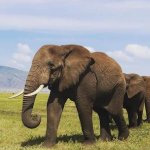
We use 5 or 7 passenger 4-wheel-drive Land Cruisers, Toyota Hiace as well as Land Rovers all with viewing roofs for the safaris. Take a note that a normal minibus or saloon can be used for transfer to and from the airport depending on the size of the group which is visit the country.
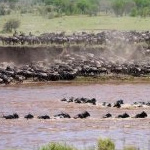
They are licensed, trained, friendly, and have years of experience in Tanzania safari! All of them speaks fluent English and others have additional languages of your mother tongue to meet your comfort and informative safari in Tanzania.
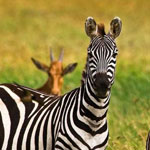
You can buy any drinks along your way to the Tanzania safari. There will be mini-markets in town and also you can have some at your hotel or lodge that you will spend an overnight there.
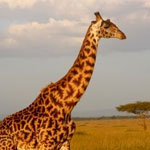
With modernized World most of the lodges and tented camps serve breakfast and dinner, typically buffet-style. European, Asian and African cuisines are served in a high standard. Due to the fact that you will be spending your afternoon doing game drive often you will have to take your lunch box with you.
If by chance the itinerary shows that you will take your hot lunch at the hotel then there is no need of packed lunch. Basically lunch at the lodge follows with a rest before proceeding with late afternoon game drive.
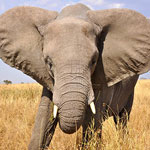
The great extraordinary animal kingdom migration is an annual migration of about 1 million wildebeest, 300000 zebras and 200000 gazelles migrating from Serengeti National Park to Ngorongoro crater and contiguous Masai Mara National Reserve searching for fresh grasses as well as water. This is a honeymoon (easy to hunt) period for the crocodile in Grumeti River and other carnivores such as lion and leopard while the migration is taking place. For more information on how the migration takes place please click here.
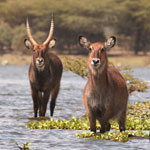
The best time to see the migration in Tanzania is January-March and June-August and in Masai Mara National Reserve in Kenya it is often best September-October. These are also the most popular times to go, so you will need to book well in advance.
You will see abundance of wildlife all year round. However it should be clear that changing of weather can affect this migration circular and a need for some two to three days in Serengeti National Park give you a wide chance of view migration properly.
Whether you are looking to explore the wildlife of the Serengeti, or begin your expedition up Mount Kilimanjaro, we have something suitable for all of you. Get in touch with us today and our team of specialists will help build your experience of a lifetime to Tanzania
Read More